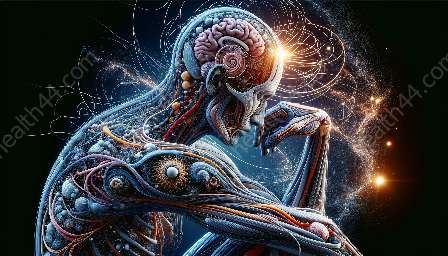Regional anatomy is a crucial aspect of understanding the human body and plays a significant role in health education and medical training. This branch of anatomy focuses on studying the structures and functions of specific body regions, such as the head, neck, thorax, abdomen, pelvis, and limbs. By delving into the intricate details of regional anatomy, healthcare professionals gain invaluable insights that are essential for accurate diagnosis, treatment, and surgical procedures.
The Head and Neck
The head and neck region is a complex anatomical area housing vital structures, including the brain, eyes, ears, nose, mouth, throat, and major blood vessels. In health education and medical training, understanding the regional anatomy of the head and neck is essential for identifying and addressing various conditions, such as neurological disorders, sensory impairments, and head and neck cancers.
The Thorax
The thoracic region encompasses the chest area, housing vital organs such as the heart and lungs. Studying the regional anatomy of the thorax is fundamental for healthcare professionals, as it provides insights into heart and lung diseases, respiratory conditions, and thoracic surgical procedures.
The Abdomen and Pelvis
The abdomen and pelvis contain a plethora of organs, including the stomach, liver, intestines, reproductive organs, and urinary system. Knowledge of regional anatomy in this area is critical for diagnosing and treating gastrointestinal disorders, reproductive health issues, and urological conditions.
The Limbs
The limbs, comprising the upper and lower extremities, are integral for movement, strength, and dexterity. Healthcare professionals require in-depth knowledge of the regional anatomy of the limbs to understand musculoskeletal injuries, nerve damage, and orthopedic interventions.
Utilizing Regional Anatomy in Healthcare
Health education and medical training heavily rely on regional anatomy to provide a comprehensive understanding of the human body. By comprehensively exploring the anatomical structures within specific body regions, healthcare professionals can accurately interpret clinical findings, perform precise medical procedures, and effectively communicate with patients and colleagues.
Enhancing Diagnostic Skills
Proficiency in regional anatomy enables healthcare practitioners to accurately identify and interpret clinical symptoms, aiding in the prompt diagnosis of various medical conditions. By recognizing the spatial relationships of anatomical structures within specific regions, professionals can localize pathology and provide targeted interventions.
Facilitating Surgical Interventions
For surgeons and surgical teams, a thorough understanding of regional anatomy is imperative for planning and executing surgical procedures. Precise knowledge of anatomical landmarks, vasculature, and innervation within specific body regions ensures surgical accuracy and reduces the risk of complications.
Improving Patient Communication
Health education and medical training emphasize the significance of effective communication with patients. Proficiency in regional anatomy enables healthcare professionals to articulate medical conditions, treatment options, and anticipated outcomes in a clear and comprehensive manner, fostering trust and cooperation with patients.
Advanced Technologies in Regional Anatomy
Advancements in medical technologies have revolutionized the study and application of regional anatomy. Cutting-edge imaging techniques, such as MRI, CT scans, and 3D reconstruction, provide detailed visualizations of anatomical structures, enhancing the understanding of regional anatomy in health education and medical practice.
Virtual Dissection and Simulation
Virtual dissection software and anatomical simulation platforms offer immersive learning experiences for medical students and practitioners. These innovative technologies allow users to explore regional anatomy in a dynamic and interactive manner, promoting deeper comprehension and retention of anatomical knowledge.
Augmented Reality in Medical Training
Augmented reality (AR) applications enable healthcare professionals to overlay anatomical structures onto real-world environments, facilitating hands-on learning and enhancing the application of regional anatomy in medical training scenarios.
Conclusion
Regional anatomy is an indispensable component of health education and medical training, providing profound insights into the complexities of the human body. The in-depth understanding of anatomical structures and functions within specific body regions equips healthcare professionals with the knowledge and skills necessary to deliver exceptional patient care, conduct precise medical interventions, and advance the field of medicine.


